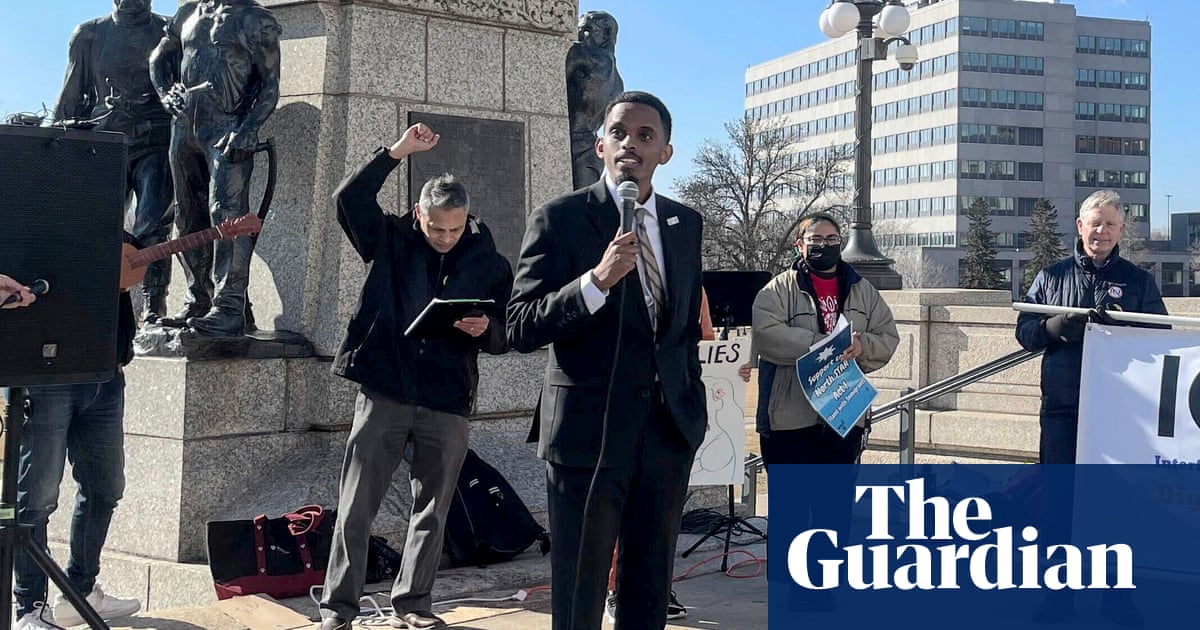Since Bernie Sanders’s first presidential campaign, the electoral theory of the American left has rested upon the idea that a sizable bloc of Americans – alienated from the traditional politics of left and right – have withdrawn from politics entirely. They stand closer to the Democrats on many issues, but, seeing little by way of material benefit from the party’s soaring rhetoric of “defending democracy”, they have opted out of the political process. And, as the theory goes, a bold, populist candidate – someone like Sanders himself – could bring this silent constituency back into the fold.
If that logic once explained how Sanders might have won, it might now explain why Kamala Harris lost. And, as new troves of post-election data surface, the debate over whether Democrats might have avoided last year’s defeat by mobilizing non-voters has become one of the party’s hottest factional disputes.
Among those strategizing within the Democratic party, one’s confidence in voter activation is often a proxy for their broader politics. Those who believe Harris’s campaign failed to activate non-voters typically argue her platform lacked the populist edge needed to mobilize disaffected Americans. Their critics tend to believe the problem ran in the opposite direction: the electorate had moved right and the Democrats’ failure lay in their inability to meet it there.
Detractors of the activation theory point to a 26 June Pew Research report – which found Donald Trump leading Harris by three points among non-voters – as decisive proof that non-participants lean Republican. The catch, though, is that the survey concluded less than two weeks after Trump’s victory. Polling taken in the aftermath of a race is notoriously vulnerable to distortion, and the bandwagon effect can temporarily inflate a victorious candidate’s popularity. That effect is especially pronounced among disengaged or loosely affiliated voters. That number almost certainly marks the high-water line of Trump’s support among non-voters.
Another oft-cited figure from the New York Times/Siena College, which the Democratic strategist and data scientist David Shor referenced during his own interview with the Times’s Ezra Klein, found Trump leading by 14 points among 2020 non-voters. But it uses survey data collected before Biden dropped out of the race. Then there is Shor’s own post-election poll, conducted through his polling firm Blue Rose Research, which found Trump leading by 11 points among non-voters – though the underlying data remains private and the methodology undisclosed.
The Cooperative Election Study (CES) – a late-November survey of more than 50,000 voters – offers one of the few high-quality, public windows on 2024. An analysis of the CES data by political scientists Jake Grumbach, Adam Bonica and their colleagues found that a plurality of non-voters identified themselves as most closely aligned with the Democratic party – and an absolute majority of registered voters who declined to cast a ballot in 2024 considered themselves Democrats. The non-electorate certainly wasn’t blue enough to have swung the race, but by no means as red as the activation theory’s opponents claim.
What’s even clearer is the geography of turnout. Voter participation dropped especially sharply in Democratic strongholds – particularly urban counties in Pennsylvania, Michigan and Georgia. By contrast, turnout in Republican areas held steady or even increased modestly. In other words, the Democratic campaign had more to gain from energizing its own base than from chasing centrist swing voters.
Harris wouldn’t have prevailed under conditions of 100% turnout. (Grumbach, Bonica, etc don’t claim as such.) But a more focused strategy – mobilizing the Democratic base, speaking directly to material concerns, and resisting the pull toward bland centrism – might have narrowed the margin significantly.
Ironically, the aforementioned Pew report concludes the same. “As in prior elections, a change in voters’ partisan allegiances – switching from the Democratic to the Republican candidate or vice versa – proved to be a less important factor in Trump’s victory than differential partisan turnout,” write the authors. “Republican-leaning eligible voters simply were more likely to turn out than Democratic-leaning eligible voters in 2024.”
Even so, the CES data may disappoint progressives, if not for the reasons their critics imagine. An analysis of the CES from the Center for Working Class Politics’s Jared Abbott and Dustin Guastella found that Democrats who stayed home in 2024 were, on average, less ideologically liberal on hot-button social questions – more skeptical of an assault-rifle ban, receptive to a border wall, less concerned with climate change, and cooler to the language of structural racism – than the Democrats who showed up.
Yet, as Abbott and Guastella found, those same non-voters were more economically populist: disproportionately working-class and non-college, while eager for bigger public investment programs, a higher corporate tax rate, and a stronger social safety net.
The Democratic non-electorate doesn’t clearly align with progressive orthodoxy. Equally clear, though, is that a blanket lurch toward cultural moderation, absent populist economics, would do little to fire up non-voters who already share many progressive economic instincts.
Making decisive claims about non-voters is necessarily difficult. By definition, they are the least likely to respond to pollsters, and their political preferences are often tentative or inconsistent. Yet certain commentators’ eagerness to cast non-voters as Trump supporters reveals more about elite assumptions than about public sentiment.
There’s been a rush to cast non-voters as conservatives, not because the evidence demands it, but because the alternative – that Democrats need to speak more directly to the working class – remains uncomfortable for the party establishment. There is no way around the fact that in 2024, those Americans didn’t hear anything worth voting for.
-
Alex Bronzini-Vender is a writer living in New York

 German (DE)
German (DE)  English (US)
English (US)  Spanish (ES)
Spanish (ES)  French (FR)
French (FR)  Hindi (IN)
Hindi (IN)  Italian (IT)
Italian (IT)  Russian (RU)
Russian (RU)  10 hours ago
10 hours ago
























Comments